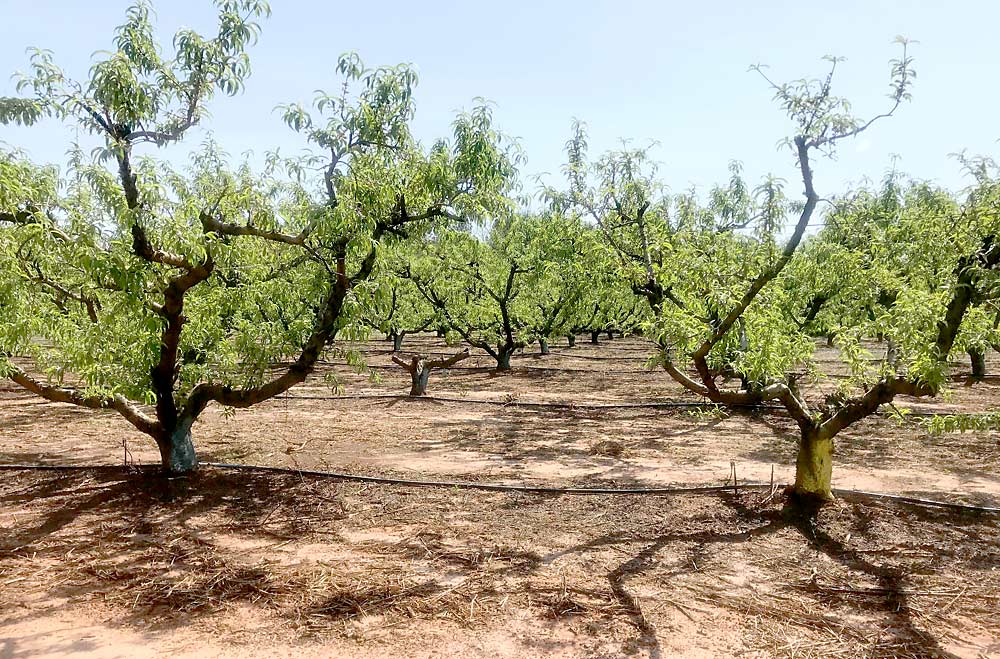
The Southeast stone fruit industry has done a lot to make sure its trees are free of viruses. Growers in South Carolina and Georgia, the nursery industry and researchers at Clemson University have collaborated for years to make sure the buds and rootstocks propagated by nurseries have been tested and found free of important viruses such as prunus necrotic ringspot virus (PNRSV), prune dwarf virus (PDV) and plum pox.
The collaboration works well, as long as the growers buy certified budwood and the nurseries cut from tested blocks, said Chalmers Carr, owner of Titan Farms, a large peach farm in South Carolina.
But even a newly planted block that’s been certified 100 percent virus-free won’t stay that way forever. After a decade or so, such blocks could have a virus load of up to 4 percent — a small amount, but one that can weaken trees over time. The mystery, Carr said, is how viruses got there in the first place. Were they transmitted via pruners working adjoining orchards? Blown in with pollen? Transferred via pollinators or other insects?
The possibility of pollen-borne viruses has major implications and, if proven, would require a whole new set of management tactics, Carr said.
Research in Pacific Northwest cherry orchards has shown PNRSV and PDV spread naturally via pollen. Experiments have indicated that horizontal virus spread in stone fruit orchards can occur from tree to tree during pollination, and that spread is more likely to occur between trees of the same cultivar, said pathologist Jay Pscheidt of Oregon State University.
In the Southeast, it may be a different story. That’s why Clemson University researchers decided to look into the role wild prunus might play in spreading viruses in stone fruit orchards.
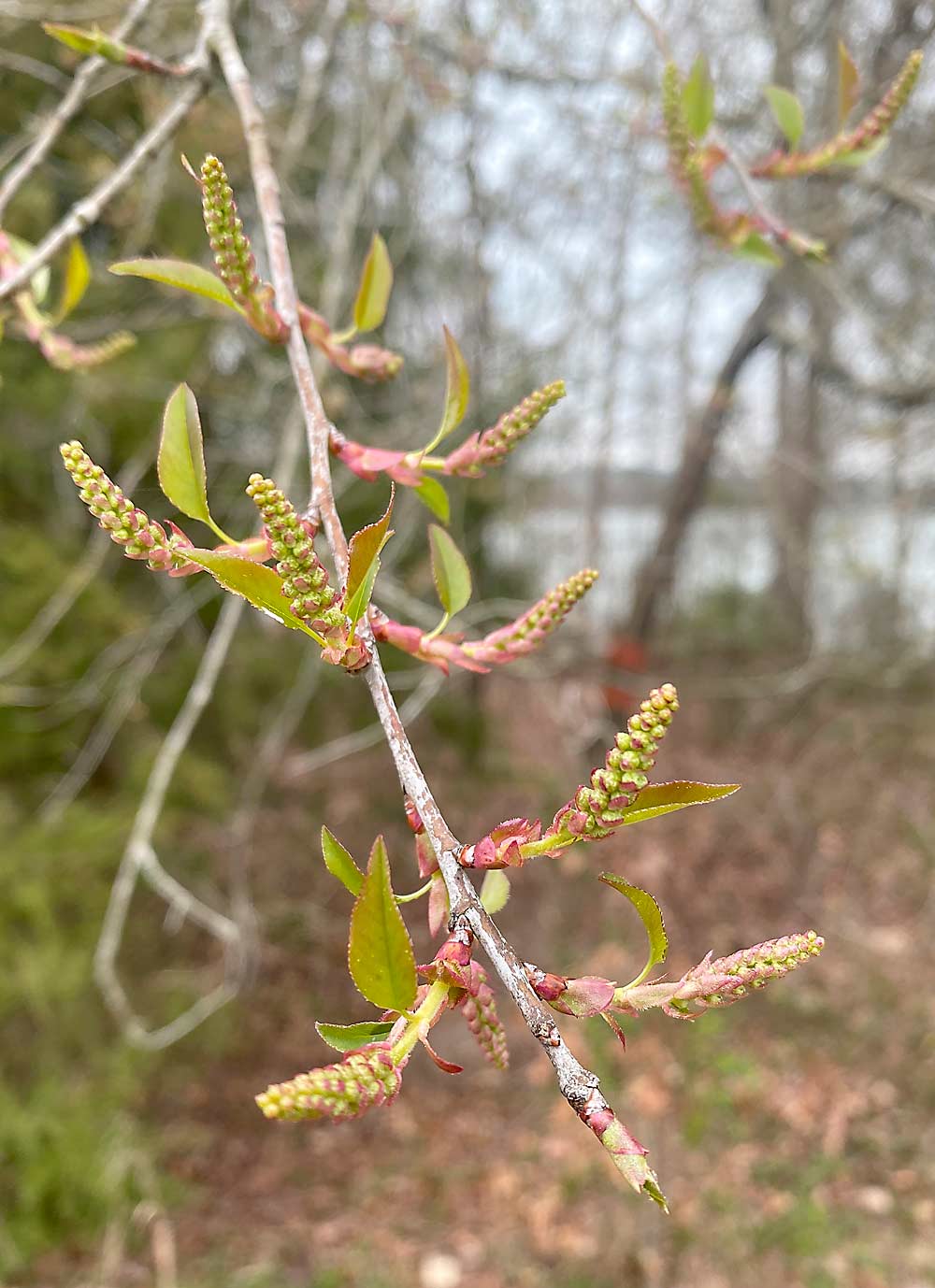
When Elizabeth Cieniewicz joined Clemson as a professor and head of its plant virology lab in 2019, one of the first projects she decided to tackle was investigating alternative means of virus transmission, including pollen-borne, in stone fruit orchards. She already knew that viruses such as PNRSV and PDV could be spread via propagation, but clean plant programs had mostly taken care of that problem. However, there was a lack of current research on the topic of alternative means of virus transmission, she said.
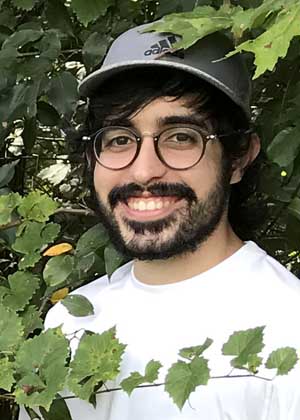
Cieniewicz tapped a student pursuing a master’s degree in plant virology, Fabian Rodriguez Bonilla, to lead the project. They both knew that PNRSV and PDV are found every year in the peach orchard at Clemson’s Musser Fruit Research Farm. They didn’t know where the viruses came from, but they guessed it might be from Clemson’s surrounding experimental forest land. They noticed that a lot of Prunus serotina, or wild cherry trees, surrounded the research farm, as well as Chickasaw plum trees. Rodriguez Bonilla started collecting samples from those trees, to find out if they might be a source of inoculum.
Rodriguez Bonilla screened the tissue he collected for viruses, and he found at least eight Prunus serotina trees with PNRSV. He also compared the flowering times of the wild cherry and cultivated peach trees. So far, he’s found a three- or four-day overlap between peach and wild cherry bloom — not a long window, but enough to make disease spread possible, he said.
He’s now doing genomic characterization of the virus isolates from wild prunus and comparing them to virus isolates from the peach orchard, to see if they match. He plans to gather enough sequencing data by fall, when he will start to infer whether the same isolates are infecting both areas.
The next big question to answer will be whether pollinating insects play a role. One of Cieniewicz’s graduate students, Mandeep Tayal, is investigating orchard blocks infected with PNRSV and PDV, to find out if pollinators contribute to virus transmission.
Tayal captured bees in traps and sweep nets this spring, took pollen samples from their bodies and tested them to see if there was any trace of viruses. He found viruses in a couple of samples but is awaiting more definitive results later this year.
—by Matt Milkovich

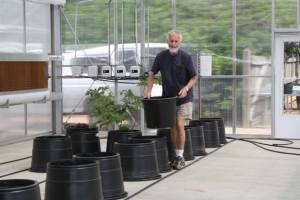
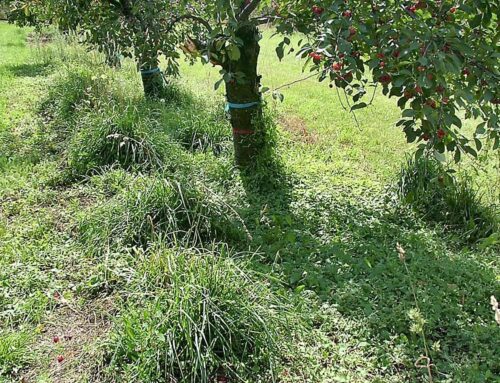


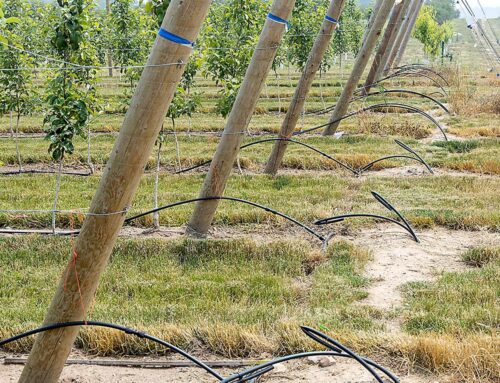

Leave A Comment